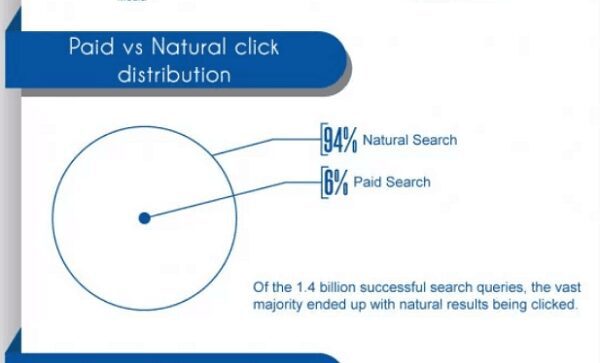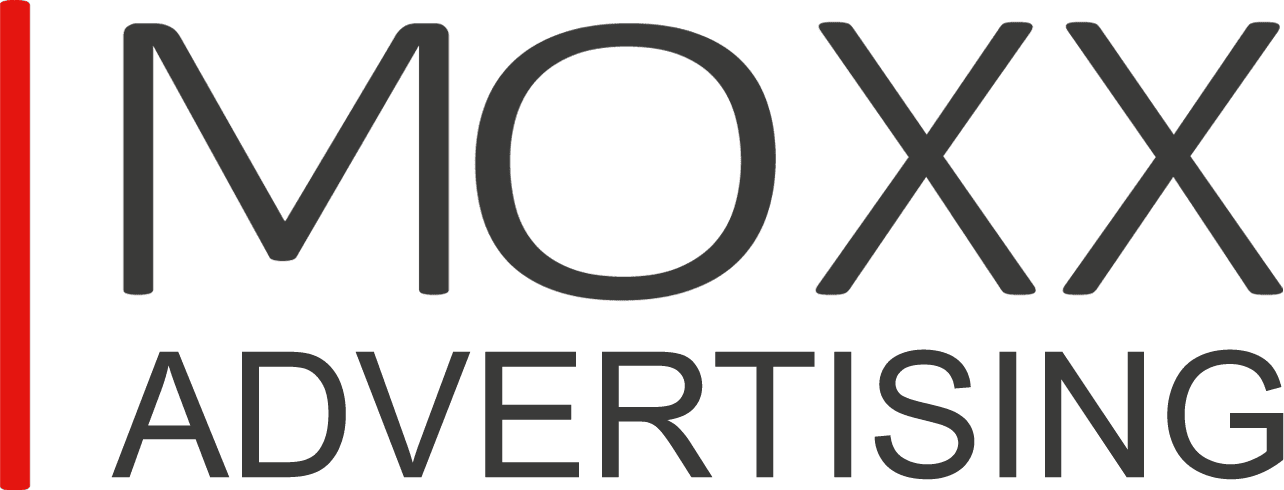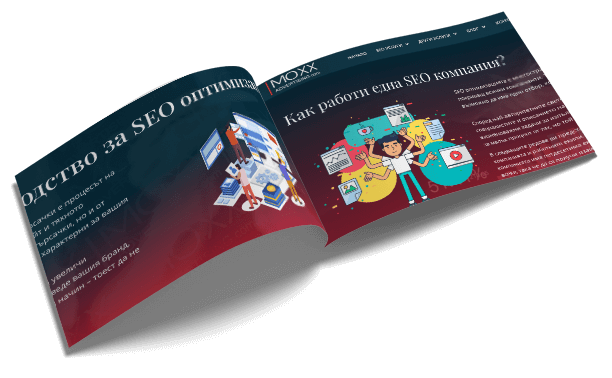Content
Why do I need SEO?
If online marketing is an integral part of your business, then SEO can be a serious asset in your arsenal.
How does an SEO company work?
SEO is a multifaceted activity carried out by a team covering all components.
4 SEO mistakes
Learn how to avoid the most common mistakes in your SEO campaign.
DIY SEO and affordable SEO
You can minimise your costs if you are willing to invest a lot of valuable time and effort into a complex topic.
SEO questions
Find answers to frequently asked questions about search engine optimisation and avoid SEO mistakes.
Order SEO
Trust MOXX Advertising - an SEO company that takes a responsible approach to its clients and achieves results.
Why do I need SEO?
To be fair, those who need SEO are individuals, startups, small and medium-sized businesses, and large companies aiming to spread their messages to a much larger audience, create the best online visibility, and increase their sales.
For them, teams of SEO specialists create a system of various elements that align with the clients’ goals and create opportunities for more visibility, traffic, sales, etc. In the following paragraphs, understand the reasons why you need SEO in a more detailed perspective.
6 reasons why you need SEO
1. SEO traffic dominates paid advertising
Research by experts establishes that organic search results drive up to 75% of website traffic. Paid search, or ads run through various platforms, accounts for only 15% of total traffic.
Translated into simpler terms, paid search and ads are just the tip of the marketing iceberg. The more you invest in advertising, the more you neglect organic search, which automatically means your competitors will capitalize on this gap.




2. SEO converts potential customers into buyers
Our data is based on research from various companies working with figures. Regarding effective conversion of potential customers into buyers, statistics show that potential customers reaching a website through organic search lead to a sale about 15% of the time. Compare this to 2% potential customers who discover you through outbound marketing, such as telemarketing, email ads, and online ads through platforms.
This speaks to the immense effectiveness of SEO compared to other marketing tools. And it’s not by chance. When potential customers find you while seeking a solution to their problem, they are much more receptive to websites that have organically appeared high in the search results, as the search is from the user to the service or product provider.
3. Your opportunities expand
According to Google statistics, nearly 50% of search queries are now made on smartphones and other mobile devices. However, these percentages are increasing as it is a growing trend that has not yet reached its peak.
The dramatic increase in the use of mobile devices has led to new SEO techniques convenient for implementing marketing strategies focused on mobile devices and local search. This has opened up opportunities for businesses to be found more quickly and easily through organic search, a result of well-executed local SEO and mobile SEO.
.




4. Up to 64% of all web traffic passes through search engines
A study analysing over 310 million website visits found that search engines, such as Google, are the source of 64% of all traffic. While there are other platforms through which clients and consumers reach businesses, with social media playing a significant role, organic search delivers the lion’s share of visitors to most websites.
The statistics show that potential customers reaching a website through organic search lead to a sale approximately 15% of the time.
5. SEO involves your business in the purchase-sale cycle
Almost all users research a product or service online before making a purchase. You know this is true because each of us, even if offering services and products online, is also a consumer.
SEO can multiply your sales by helping searchers and researchers find your applications, services, and products during the stages before the actual purchase:
Information Search: Users use broad search terms like “Christmas gift,” “winter car tires,” “best corporate gifts.”
Product Search with Ratings: Searches narrow down using terms like “drill price” or “reviews on refrigerator brand X.”
Transaction: At this stage, there’s a focus on making the actual purchase, such as “looking to buy,” “buy cordless lawnmower brand Y,” “where to buy an icon,” etc.
Studies show that 80% of buyers will review and compare items online before making a purchase, surpassing 90% for B2B buyers. Ultimately, with many potential customers researching products and services online, you need to be part of this process before your competitors.
The halo effect
When a website ranks high on a reliable search engine like Google or Bing without owners paying for advertising, it’s like appearing on television or in newspapers in the time before electronic media.
Your business can benefit immensely from the implied approval that comes with unpaid visibility. This is a signal to customers that if you’re ranked high, you’ve put effort into content, presentation to consumers, and are achieving sales, automatically unlocking a desire to shop from your site.
How does an SEO company work?
SEO is a multifaceted activity performed by a team covering all components. In an online marketing company, there might be a team dedicated solely to SEO activities.
According to the most authoritative global SEO companies, the responsibilities of SEO specialists and descriptions of their work reveal a list of 50 essential tasks. The end-user of the service may only be aware of a small percentage of these tasks, but they are interested in the result.
In the following lines, we present the main directions in the work of an SEO company and the working teams. The fact that there are 50 tasks does not mean there are fifty experts in the company, but there are strictly defined tasks for each, ensuring interaction between the teams.
Defining client goals
There is an SEO team responsible for understanding the client’s goals. The person in charge of this task connects with the client to determine their goals, market position in a specific niche, and brand
presence in both social and online environments. The aim of this communication is to make the goals realistic, measurable, and achievable.
Within this team, there is a specialised SEO consultant who deals with recommendations for SEO strategy after a detailed understanding of the project. They propose strategies for digital marketing campaigns and tactics. The consultant communicates with clients, informing them about the possibilities that can be realised as solutions for the specific project. Strategic planning, communication of realistic expectations to clients, and other aspects fall under their purview.
Keyword determination
A team of specialists is dedicated to keyword research and analysis specific to a given niche. They identify new potential keywords and phrases with certain characteristics, search for alternatives, and aim for maximum efficiency. Keywords and phrases are mapped to individual web pages to organise them by specific themes. Planning and executing keywords prevent issues with keyword cannibalisation at later stages and strengthen the pages.
Copywriting
With the analysed and proposed keywords, the copywriting team works. Copywriters create effective headlines, meta tags, paragraphs, and subheadings, descriptions, and meta-descriptions to increase clicks in searches. They work based on their knowledge of the audience, aligning with user trends in the niche, to create relevant content for what customers are searching for.
UX and UI design
A team of graphic designers primarily works on the UI, focusing on the user interface. Other colleagues handle UX for better website implementation. Optimisation occurs on the website itself (On-site optimisation) with the goal of improving user experience, reducing page abandonment, increasing page views, increasing visitor time, and increasing click-through rate (CTR) on search engine results pages (SERPS).
Technical SEO analysis
One of the most crucial activities is performed by SEO specialists dealing with diagnostics. They uncover technical issues with SEO and resolve them. Tasks include canonicalisation, pagination, 404 error checks, 301/302 redirects, redirect lists, pages with 302 redirects, pages with 301 redirects, pages with more than one redirect, duplicate content, Robot.txt file, missing Alt attributes, improper URL structure (dynamic URLs, very long URLs), slow website speed, pages with meta refresh, pages with {rel=“canonical“} tag, broken internal links, and an excessive number of links.
SEO audit
A comprehensive audit of the website is performed by a team of specialists.
They conduct research, tests, and diagnostics for visibility issues on the website. Basic lines and benchmark indicators are documented. Google indexing status, HTML code effectiveness, traffic statistics, keyword-directed traffic, and checks for very large pages are examined.
A preliminary audit is also an essential element of the SEO process. It involves an analysis and evaluation of the client’s current state related to their online presence. Key elements are analysed concerning an existing site: traffic volume, traffic channels and sources, brand presentation online, website architecture and content, domain authority, etc.
Technical SEO
A team leads technical SEO. Specialists in this field apply advanced and up-to-date SEO techniques, using tools and software to improve the website’s visibility. They work to implement structures that determine the overall performance of the site.
Due to the importance of mobile device searches, there is a team focused on designing effectively for mobile devices and achieving good results in mobile device searches.
Specialisation in redesign and development of sites with different orientations is crucial. Besides traditional websites, there are specificities related to Ecommerce sites (for electronic commerce), which have a different setup and structure, changing the SEO techniques used for optimal results.
Link building
The team also works on link building, blog optimisation, on and off-site SEO. They create content strategies, define semantic cores, analyse competition in the niche, create local SEO campaigns, develop SEO-friendly sites, take care of important content and its accessibility, eliminate technical SEO errors, create new ideas for optimisation development based on current data, and improve already uploaded content.
The SEO company is a flexible and functional organisation that covers an enormous base of information to connect it with client goals and achieve optimal results for each project.
4 costly SEO mistakes
Unsuitable mobile-friendly website
Creating a website that is not suitable for mobile devices is a significant SEO error. Website optimisation for search engines involves much more than just content and keywords. Users are no longer limited to desktop computers, with many accessing websites through smartphones, androids, and tablets. Therefore, it is crucial for the website to provide convenience for users browsing through their mobile devices. If this convenience is lacking, users simply abandon the site.
Broken links
Imagine reading a web page, intrigued by the information, clicking on a link in the text, and it leads you nowhere! Apart from you, Google also dislikes non-functional links, automatically lowering your website’s performance in Google rankings. This can ruin all the diligent work put into content creation and SEO. Regularly reviewing your site can help you remove such broken links.
Missing links
Just as mentioned above harms the site, the absence of high-quality outbound links is also a direct path to poor rankings for any web page on Google. Therefore, time should be devoted to placing external links to relevant high-ranking websites with a good reputation. They link back to high-quality websites that lead to you, further boosting your ranking in organic searches and web traffic.








Neglecting analytics
Responsible businesses should not overlook this aspect, yet it happens frequently. The only way to understand if your SEO efforts are working is by analysing your progress and leveraging available tools. Failure to set up and review traffic data for your website is a serious mistake but an easily rectifiable one. It is crucial to know what works, what doesn’t, and what to do next in your optimisation efforts. Otherwise, you are simply flying blind and might plunge headfirst into a pool with sharp edges.
DIY (Do It Yourself) SEO and affordable SEO – what you need to know, pros and cons
The mentioned four mistakes are typical of companies practising DIY SEO, especially smaller enterprises that allocate little to no budget for SEO. In such cases, these companies either completely neglect the process or, more likely, attempt to do SEO themselves.
For those opting for DIY SEO, it’s crucial to be aware that while they may minimise costs, they will invest a significant amount of valuable time and effort into a complex subject. The best way to assess the costs of a “do it yourself” approach is by discussing the various involved steps. Considering the efforts people put into handling it themselves are not to be underestimated, it’s vital to understand DIY SEO, affordable SEO, their pros and cons, and other essential details.
Preliminary research
If you’re not an SEO specialist, you first need to familiarise yourself with the intricacies of the trade. There is a wealth of freely accessible information explaining best practices in SEO. The positive aspect of this initial “do it yourself” stage is that it can be completed without any costs. However, you must arm yourself with patience because mastering the basics of SEO takes a lot of time, knowledge, and experience.
Keyword research and competitor analysis
After abandoning professional SEO, you’ll need to dedicate even more hours to conduct your specific research. Before starting any SEO project, you must determine which keywords are relevant to your niche, comparing them with competitive firms in your sector. There are platforms for free keyword research using Google’s keyword tool. Still, there are also paid tools like Ahrefs that will help you conduct comprehensive competitor research.
Optimising site architecture
Your research should lead you to a point where you know what you need to ensure SEO for your site. You’ll then need to optimise the structure and architecture of your website based on what you’ve learned. This can be a complex process, and hence, at this point, most business owners reconsider the idea of hiring a professional. If you’re confident in coding your own site, you can make your changes and avoid allocating funds for this stage of SEO.
Creating and optimising website content
Good SEO relies on high-quality, unique content that will appeal to Google algorithms. You need to optimise the main pages of your site, keeping in mind the overall SEO strategy. Additionally, you must implement a strategy for adding new content and updating existing content on your blog and other site elements. This content should be both unique and value-adding. If you want to produce this content internally, it will take a considerable amount of time and effort.
Ongoing analysis and link building
SEO requires continuous analysis and link building. To rank higher in searches compared to your competitors, you need to keep adding those valuable backlinks. Even after completing the actions mentioned so far, DIY SEO requires a lot of time and attention, especially for ongoing analysis and link building.
DIY SEO Execution can be done with minimal financial expenses. However, you need to allocate a significant portion of your time and attention to the process. Most people don’t have that time. This is where the concept of Cheap SEO comes in. It is built on the possibility of spending less money for services from an SEO company.
You can think of this service as a hybrid between what you’ve done yourself or as a paid service from an SEO specialist who will complete the task by using risky techniques. The danger in implementing Cheap SEO lies in the fact that you may encounter unscrupulous individuals and companies that will skip stages in SEO execution, violate search engine algorithm requirements. This can lead to ineffective solutions for your site and, consequently, be harmful to your business venture.
SEO questions
Short for Search Engine Optimisation, it is the process of optimising for search engines to achieve higher rankings in search engine results pages (SERPs) based on organic (unpaid) traffic to the respective web page.
SEO is about helping Google and all search engines better understand your website. Search engines favour authoritative sites with relevant content that can be crawled. Therefore, efforts are made to build a good authority through various tactics. The relevance of the site helps search engines understand what the website is about, directing people to the site who are looking for exactly what you present as content. Crawling is related to technical SEO and is a complex system.
Building SEO is a systematic process in several steps, which currently are as follows: 1) Define and synchronise with client goals. 2) Research and work on the site. 3) Keyword research. 4) Check keyword performance. 5) Choose a course of action, create something different and new, or follow a classic situation according to client goals. 6) Technical SEO. 7) Off-site work: link building, reputation building, social media work (indirect effect). 8) Content work: enhancement, changes, relevance. 9) Final changes and steps for control and measurement.
It is important for service users to know that SEO is a long-term investment and can ultimately be your biggest traffic driver if you dedicate the time it deserves. SEO requires constant attention and is definitely not something quick and one-time. Your SEO strategy takes time, planning, and readjustment to achieve and maintain rankings in search, return on investment, and overall traffic growth.
Since building SEO from the research phase to the phase of a working site with implemented changes is a time-consuming process, it unfolds differently over time. Smaller businesses see changes after the first 6 months. For corporate sites and online stores, it takes about 1 year. Does it seem too long? To have a good return on investment (ROI), efforts must be made to create lasting interest, attract the best customers, and build brand reputation. This takes time, considering the online environment in the specific market niche.
Before implementing changes based on SEO, an analysis of the traffic and other parameters of an already functioning website is conducted. Once the service is in progress and after a certain period, the results can be tracked using various analytical platforms. Google Analytics is one such tool designed to assist both clients and users in managing tracking. Regarding the development of a new website, predictive results are generated and tracked using the same tools after a specified period.
In percentage terms, SEO is much more effective, but it is crucial to establish all elements on the website that will form a quality online presence. Paid ads can complement achievements in the online space. Therefore, it is not recommended to compare them but to leverage their strengths in favor of your business.
It is challenging to provide a straightforward answer because different websites yield different returns. The returns on investments depend on the purpose of the website. Sometimes, investing more in SEO increases website traffic, but orders may increase by a smaller margin. Other times, minimal changes to the SEO strategy with a small budget can boost sales. Guaranteeing maximum ROI is risky.
If online marketing is an integral part of your business, then SEO can be a significant asset in your arsenal. Investment in keyword research, content creation, link building, on-site optimisation, and all SEO methodologies may not yield an immediate return on investment but will undoubtedly accomplish the main task—placing your business in a more visible position and attracting more traffic to the website.
On-page SEO is the practice that forms the basis for optimising individual web pages on a site to rank higher and increase traffic from search engines. On-page refers to both the content and HTML source code of a page, which can be optimised.
Off-page SEO is the practice that works outside the web pages on the site to help rank higher and increase traffic from search engines. Off-page is done to improve search engine and user perceptions of the popularity, relevance, reliability, and authority of the site. This is achieved through other authoritative entities on the Internet (pages, websites, people, etc.) that effectively vouch for the quality of your content.
Local SEO pertains to any business with a physical location where they serve customers or any business that serves a specific local geographic area. The diversity of businesses and services that can benefit from this includes restaurants, bars, laundries, medical offices, law firms, grocery stores, etc. The idea behind local SEO is to make the online presence attract more customers from local searches conducted on Google and other search engines. Therefore, optimisation is directed in this aspect.
The term “White Hat SEO” refers to SEO practices that comply with the conditions of major search engines, including Google. It involves offering quality content and services, ensuring fast loading times for the site, and providing user-friendly features for mobile devices. It facilitates site navigation and employs descriptive, keyword-rich meta tags. Failure to adhere to established practices leads to penalties from search engines.
The term “Black Hat SEO” refers to a set of practices used to increase the ranking of a site or its pages in search engines through means that violate the terms of service of search engines. The term “black hat” originates from Western films to distinguish “bad guys” wearing black hats from “good guys” wearing white hats (see SEO for white hat).
SEO tools explore the potential of web pages to achieve high rankings in search engine results. They provide information about backlinks and keywords, as well as insights into SEO competition on the Internet. The names of many tools may not be familiar to clients as they are associated with the work of SEO developers. Most tools are online platforms or applications that offer a foundation for link building, keyword research, competitor analysis, rank tracking, and site audits. Some of the most well-known and widely used tools include Ahrefs, SEMrush, MOZ, Majestic, SimilarWeb, Alexa, Cognitive SEO.
A significant part of the SEO service is characterised by its procedural nature, and this applies to the search for keywords as well. The process begins with researching the site’s positioning niche, the competitive environment, and what it uses to attract customers in terms of content and keywords. Competitive gap is determined as a way to measure the traffic the site attracts and where you want it to be after the changes. Words on which businesses rank and those on which they don’t are checked. The research is conducted using tools familiar to optimisers. They strive to find the right keywords and link them to customer intentions and behaviour.
A backlink is any hyperlink on a website that directs back to it. It is a form of communication where someone discussing a topic related to you, your service, or product wants to link back to your website. Backlinks are one of the many indicators used by Google and other analytics tools to measure the value of a particular page. Backlinks are also called inbound links or incoming links.
We are in the realm of SEO copywriting, which involves creating content that will be read on the site and play a key role in good organic rankings in search engines. Before creating articles and content, keyword research is conducted. The aim is to create the right type of content for the keywords identified in the analysis. Search intent (customer searches and intentions) is examined to improve the connection between keywords and the text itself. Additionally, copywriters use small secret techniques that vary depending on the client’s goals and the site’s specifics.
Online marketing is a variable entity because things change rapidly on the Internet. Years ago, the change was towards optimising websites to be mobile-friendly. When searches through them reach a plateau, we will likely see another direction in SEO. So, yes, SEO changes in direction, technique, and strategy.
Similar to almost any other profession, you can do it yourself or hire an inexperienced SEO hero. However, you risk not getting the best service because you’ve hired someone for less money to deliver things that may be beyond their capabilities.
This is usually a question from people who cannot allocate enough resources for their venture and opt out of professional services. There are enough online resources and websites for the basics of SEO. There, you can start your own kind of training and assess for yourself how well you grasp the material.
обучение и сами да прецените доколко материята ви се отдава.
This is practically impossible for regular users of the SEO service. When you engage with an SEO company, you can inquire about things you’ve heard of and even get answers. However, the essence of communication with specialists is not that. It’s enough to express what you need and get information about realistic achievements. Once the work on SEO of your site begins, you can learn from the executors themselves how to take care of your site and report any issues.


